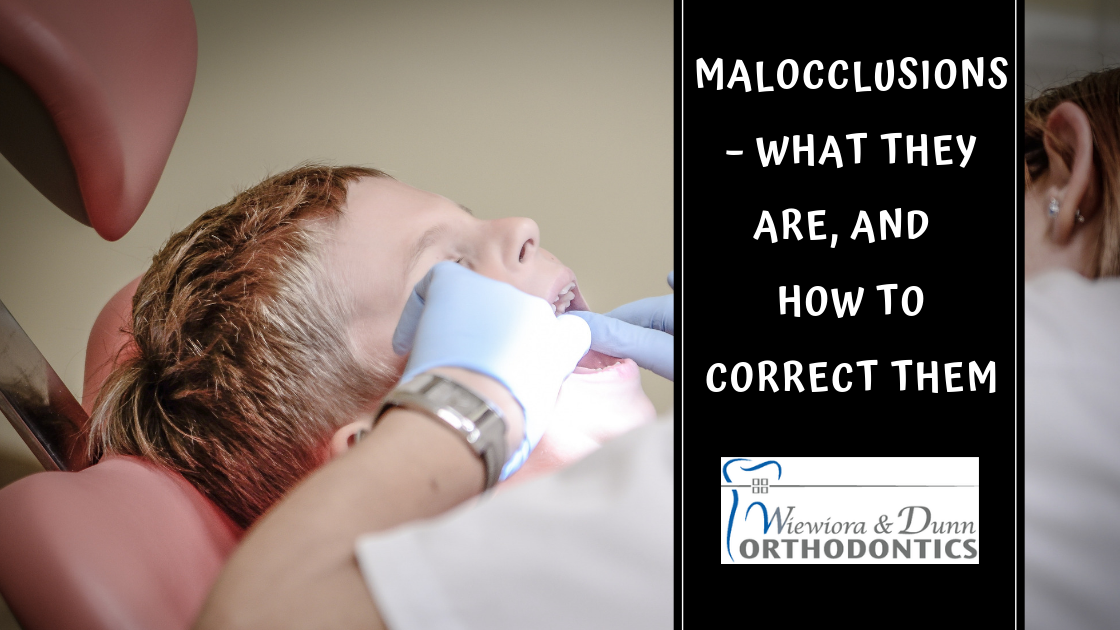The term “malocclusion” is used by orthodontists to identify a condition commonly known as a “bad bite.” Many people have malocclusion to some degree, which may not require treatment for minor cases. However, diagnosing malocclusion to determine its severity (or potential severity) and correcting it as early as possible is important for numerous reasons, including oral health, overall health, facial aesthetics and self-esteem. Learning the basics about malocclusions can help you have a well-informed conversation with an orthodontist when seeking treatment for yourself or your child.
Basically, a malocclusion is an incorrect relationship between the maxilla (upper arch) and the mandible (lower arch), or a general misalignment of the teeth. Simply stated, not all of the upper and lower teeth make contact with each other. Such poor alignment can be the result of genetic factors combined with poor oral habits (such as thumb-sucking), or other factors during early childhood.
There are three classes of malocclusions:
- Class I – The occlusion is typical, but there are spacing or overcrowding problems with the other teeth.
- Class II – The malocclusion is an overbite (the upper teeth are positioned further forward than the lower teeth). This can be caused by the protrusion of anterior teeth or the overlapping of the central teeth by the lateral teeth.
- Class III – Prognathism (also known as an “underbite”) is a malocclusion caused by the lower teeth being positioned further forward than the upper teeth. An underbite usually occurs when the jawbone is large or the maxillary bone is short.
What are the Different Types of Malocclusions?
In addition to the major classes of malocclusion, there are many different types:
- Overcrowding – This is the most common type of malocclusion, which is caused by a lack of space – resulting in crooked, overlapping teeth.
- Overjet – The top row of teeth extend past the lower teeth horizontally, causing problems with eating and speech.
- Overbite – The upper jaw overlaps with the lower jaw. Most people have a slight overbite, but a more pronounced overbite can lead to damage to the gums. Crossbite – This is when the upper teeth bite inside the lower teeth.
- Underbite – A crossbite affecting the front teeth. This is known as an anterior crossbite.
- Spacing – A spacing issue refers to abnormal space between two teeth. This can be caused by missing teeth, small teeth, tongue thrusting and thumb sucking. A large space between two teeth is called a diastema.
- Open bite – When the front teeth do not overlap the lower teeth when biting down. An open bite malocclusion can be caused by abnormalities with the position of the jaw and teeth.
How Can You Correct a Malocclusion?
Scheduling a consultation with an orthodontist is the first step in correcting any type of malocclusion. The diagnostic process will include X-rays and a complete examination to determine the malocclusion class and type, as well as factors that contributed to the condition. After a diagnosis has been made, the orthodontist will determine a treatment plan.
Although each case is individual, the following are common treatment options:
- Braces – The most common treatment for malocclusion, braces will align your teeth properly over the course of six months to two years. This is a two-stage process. The first involves aligning the teeth with metal brackets and wire. The second involves shifting your jawline into place with additional rubber bands, coils and springs. In some cases, headgear for an overbite may be necessary to attach to the braces.
- Invisalign – Invisalign is an effective method for correcting a malocclusion, depending upon the patient’s individual situation. The aligners gradually shift your teeth into proper position without the need for traditional metal braces.
- Tooth extraction – May be necessary for adult patients to create space for teeth to shift in order to achieve correct alignment during treatment with braces.
- Jaw surgery – May be necessary when the basis for your malocclusion is skeletal, rather than dental. Orthognathic surgery will reposition your jaw so your teeth align correctly.
If you are seeking treatment for yourself or your child, Wiewiora & Dunn Orthodontics offers best-in-class patient care using leading-edge techniques and equipment. Serving Central Florida for 40 years, we are part of the community, and committed to providing healthy smiles. We invite you to also read our blog post about how much you can expect braces to cost, and visit our smile gallery to see before-and-after photos of our happy patients. Contact us today to schedule your appointment, and begin your journey to the smile of your dreams.





